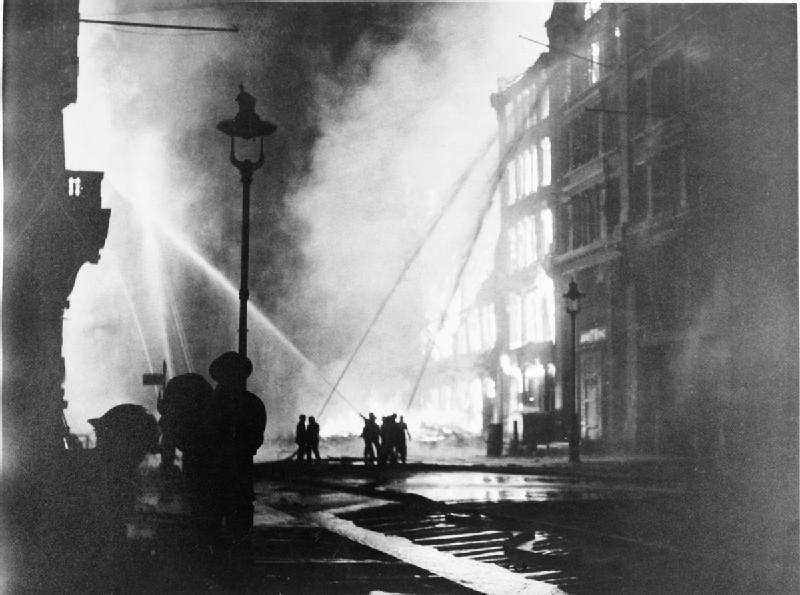
Operation Pied Piper relocated around 800,000 children from cities to safer rural areas in anticipation of Nazi bombings.
On September 1, 1939, at 4:45 a.m., Adolf Hitler's Nazi forces began their assault on Poland, igniting the largest and most devastating war in history. Meanwhile, Great Britain was executing a massive civil mobilization of its own.
By 5 a.m., children with name tags around their necks gathered at Myrdle School in Stepney. At 7 a.m., the students of St. Dominic’s Infant School in Hackney assembled with their belongings. Across Britain, more than 800,000 school-aged children from urban areas at risk of attack were ready for evacuation. On September 3, Britain and France declared war on Germany, marking the official start of World War II.
Operation Pied Piper led to the evacuation of 1.5 million people, including 800,000 children, from urban centers to safer rural areas over just three days. “We have during the past few days seen the most remarkable movement of the civil population ever recorded in history,” stated Member of Parliament James Ede to the House of Commons on September 14, 1939.
Evacuation Plans Existed Before the War Began
Despite the urgency, this evacuation was not a spontaneous reaction. Dr. Penny Starns, author of Blitz Families and Honorary Research Fellow at the University of Bristol, explains that evacuation planning dated back to over a century before, when Dorset prepared for a French invasion. However, twentieth-century warfare, with its focus on aerial bombings, heightened the need for organized evacuations.
During World War I, German Zeppelins bombed British towns like Great Yarmouth, King’s Lynn, and London. In 1937, Nazi Germany demonstrated its air power over Guernica, a Basque town, with a devastating three-hour assault. Recognizing the evolving threat, Britain formed the Air Raid Precautions Committee in 1924, but significant progress came with the 1938 Imperial Defence Committee's focus on evacuation.
Preparing to Relocate City Children to Rural Homes
The Anderson Committee, led by Sir John Anderson, developed a wartime evacuation strategy. Cities and high-risk areas became "evacuation zones," while rural areas were designated "reception zones" for evacuees. Priority groups included schoolchildren, pregnant women, mothers with young children, and teachers.
The plan required private households in reception areas to accommodate evacuees, though participation was voluntary. Minister of Health Walter Elliott emphasized the need for national unity in a BBC broadcast on January 6, 1939: “We want this to be a matter of real human relationship and affection, a willing host and a willing guest.”
The Women’s Voluntary Service (WVS) conducted home surveys to determine available accommodations. Host families received payments of 10 shillings and sixpence for the first child and 8 shillings and sixpence for each additional child. By March 1939, following Germany's invasion of Czechoslovakia, parents without the means to arrange evacuation privately registered their children at local schools. Schools practiced evacuation drills, and government appeals spread awareness through leaflets and door-to-door canvassing.
Jean Noble, in Britain’s Wartime Evacuees by Gillian Mawson, recalled how lessons halted as students awaited orders to board buses or trains for evacuation.
The Heart-Wrenching Decision to Send Children Away
Parents faced a painful choice: send their children to live with strangers in areas of relative safety or keep them home and risk bombardment. For many children, there was no chance to say goodbye. They left with gas masks and postcards pre-stamped with their parents' addresses and waited for updates posted on school gates.
During the Blitz in 1940, another 1.25 million people evacuated. Most children went to rural areas, but around 3,000 traveled to far-off destinations like Canada, Australia, and New Zealand. Despite warnings, many evacuees returned home early. By January 1940, 900,000 had come back to the cities. Dr. Starns notes, “There is a myth that most children stayed evacuated for the entire war, but in reality, many returned to urban areas.”
Mixed Experiences and a Complicated Legacy
The experiences of evacuees were varied. While some children were treated with great care and kindness, others endured neglect and abuse, including physical and sexual mistreatment. Lady Marjory Allen of Hurtwood was shocked by the conditions she witnessed and wrote a heartfelt letter to The Times in 1944, which sparked an outpouring of concern and led to government action.
The resulting 1948 Children Act was a crucial reform, changing how the State protected vulnerable children and marking a lasting legacy of Operation Pied Piper. Photo by London Fire Brigade photographer, Wikimedia commons.








































